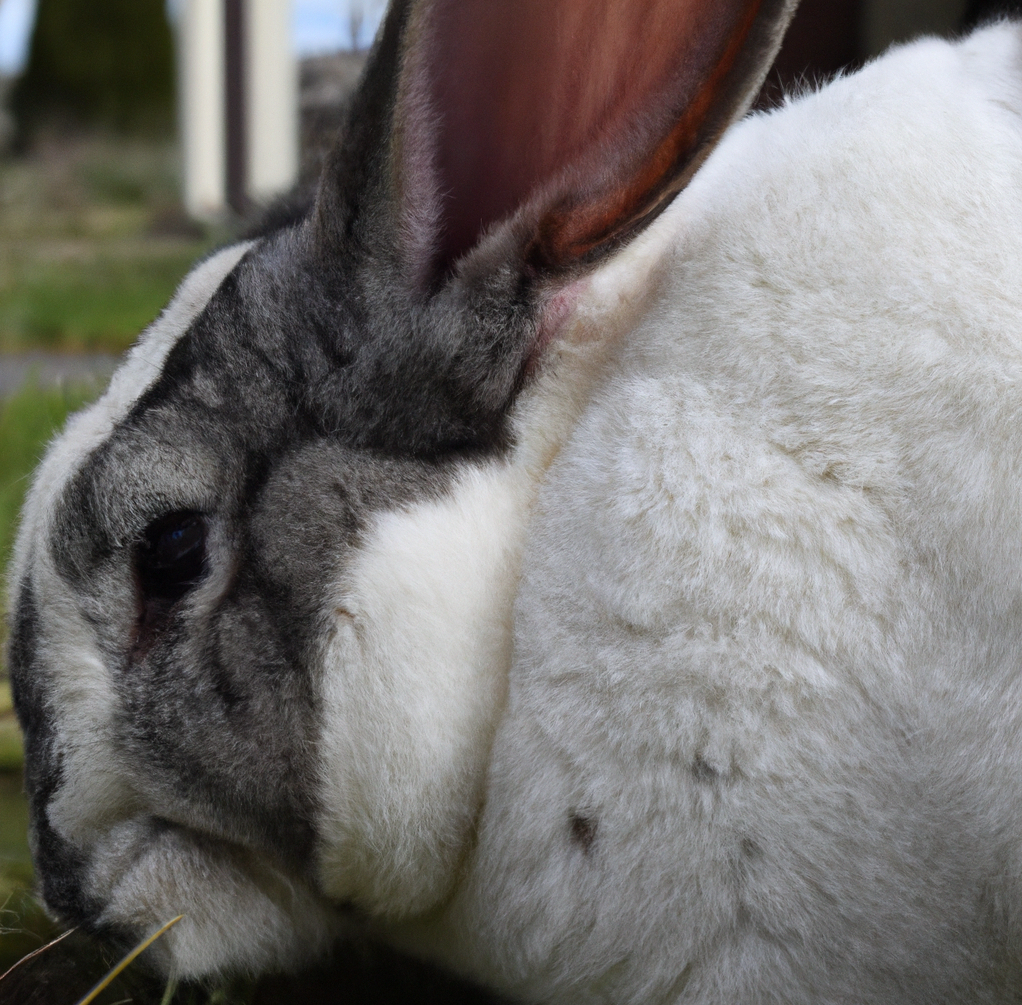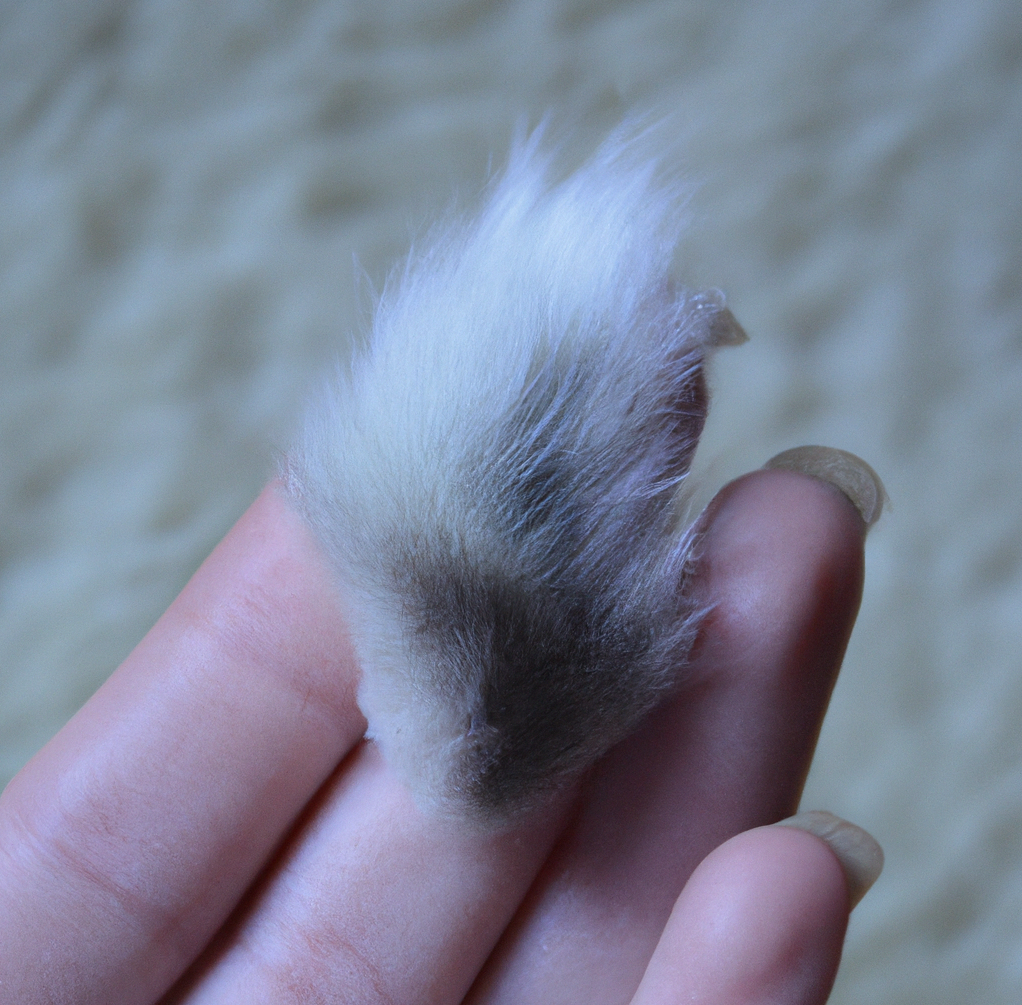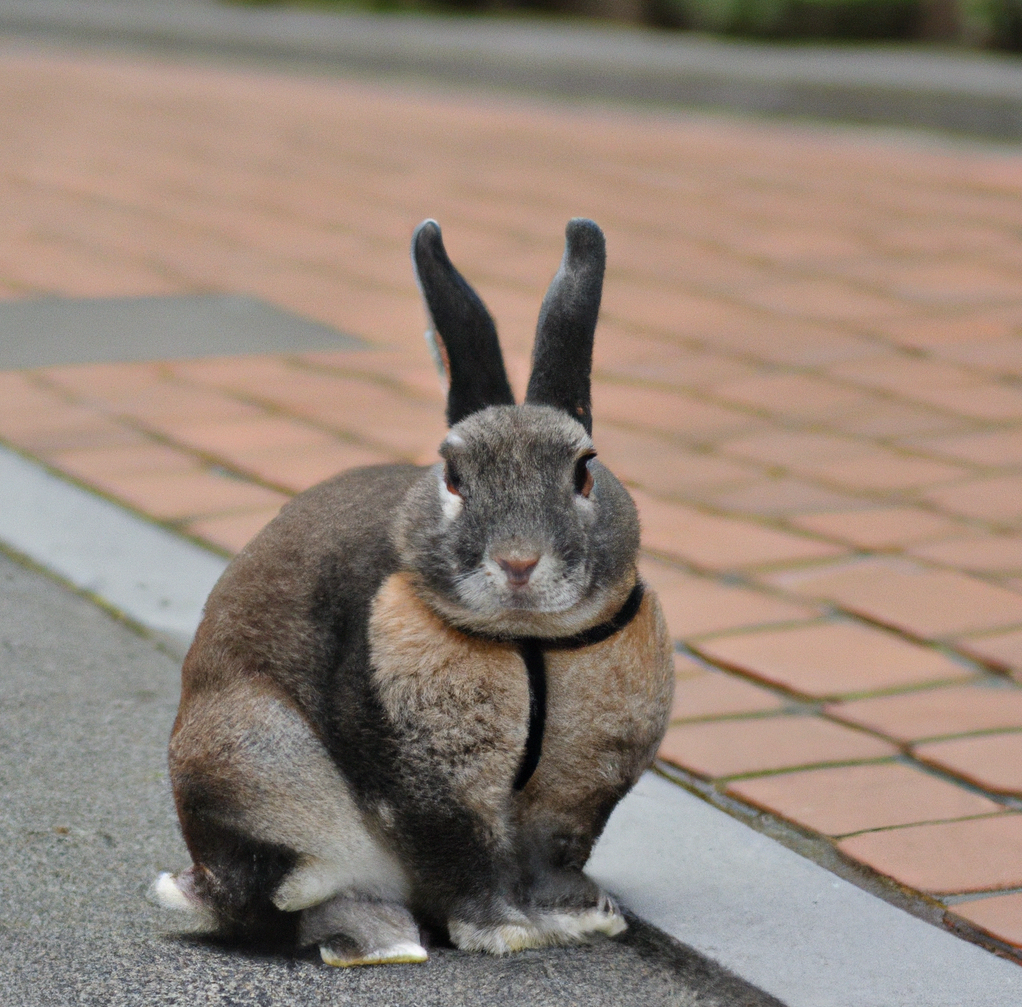If your rabbit is losing patches of fur, you may be concerned about their health and wellbeing. This can be a sign of a variety of health issues, ranging from parasites to allergies and beyond. Understanding the cause of your rabbit’s hair loss is the first step in providing them with the best care possible. In this article, we will discuss the causes of patchy fur loss in rabbits, when to seek veterinary care, and how to help your rabbit in the meantime.
The Most Common Causes of Patches of Fur Loss in Rabbits
Patches of fur loss in rabbits, also known as alopecia, can be caused by a variety of factors. The most common causes of alopecia in rabbits include parasites, allergies, poor nutrition, stress, and medical conditions.
Parasites are one of the most common causes of alopecia in rabbits. Parasites such as mites and fleas can cause fur loss due to their feeding habits. These parasites can also irritate the skin and cause itching, which can lead to over-grooming and further fur loss.
Allergies can also be a cause of alopecia in rabbits. Allergies can be caused by food, environment, or other allergens such as pollen. Allergies can cause irritation and itching, which can lead to excessive grooming and fur loss.
Poor nutrition can also be a cause of alopecia in rabbits. If a rabbit does not receive a balanced diet, its fur may become thin and brittle, which can lead to fur loss.
Stress is another common cause of alopecia in rabbits. Stress can cause a rabbit to over-groom itself, which can lead to fur loss.
Finally, medical conditions such as hypothyroidism and Cushing’s disease can cause alopecia in rabbits. Both of these conditions can cause excessive grooming and fur loss.
In conclusion, the most common causes of alopecia in rabbits are parasites, allergies, poor nutrition, stress, and medical conditions. If you believe your rabbit may be suffering from alopecia, it is important to take it to a veterinarian for a proper diagnosis and treatment.
How to Spot the Symptoms of a Serious Fur Loss Problem in Rabbits
Fur loss can be a serious problem in rabbits, but it can often be difficult to detect. If you own a rabbit, it is important to familiarize yourself with the signs of serious fur loss so that you can address the issue before it becomes a more serious health concern.
The most common sign of a serious fur loss problem is patches of missing fur. If your rabbit has bald patches, it is likely a sign of a more serious condition. In addition to bald patches, other signs of serious fur loss include excessive scratching, redness of the skin, and a change in fur color.
It is also important to inspect your rabbit’s fur closely for signs of parasites such as mites, fleas, or ticks. These parasites can cause excessive scratching, which can lead to fur loss. If you see any parasites, it is important to take your rabbit to a veterinarian for treatment.
Finally, it is important to look for any changes in behavior. If your rabbit is not eating or drinking as much as usual, it could be a sign of a more serious health condition. If you notice any of these behaviors, it is important to take your rabbit to the vet for a checkup.
By being aware of the signs of serious fur loss, you can help ensure that your rabbit is healthy and happy. If you notice any of the signs listed above, it is important to take your rabbit to the vet for a checkup.
The Potential Health Risks Associated with Fur Loss in Rabbits

Fur loss in rabbits can be a sign of a number of underlying health conditions. While the most common cause is moulting, a natural process which occurs when the rabbit’s fur is replaced with new growth, fur loss can also be caused by a range of medical issues, from bacterial and fungal infections to allergies, parasites, and endocrine disorders. As such, it is important to be aware of the potential health risks associated with fur loss in rabbits.
Bacterial or fungal infections are the most common causes of fur loss in rabbits, and can result in severe skin irritation and loss of fur. Bacterial infections are typically caused by Staphylococcus or Pasteurella species, while fungal infections are typically caused by dermatophytes or yeast. In either case, the infected area may become red, swollen, and painful, and the fur may be lost in patches or completely. Treatment typically involves antibiotics or antifungal medications.
Parasites can also cause fur loss in rabbits. Common parasites such as mites, lice, fleas, and ticks can cause irritation and hair loss, as well as anemia, weakness, and secondary infections. Treatment may involve topical or oral medications, as well as environmental control measures such as cleaning the rabbit’s living area and using flea and tick preventatives.
Allergies can also cause fur loss in rabbits. Allergens such as dust, pollen, or certain foods can cause an allergic reaction which results in skin irritation and hair loss. Treatment typically involves avoiding the allergen and using antihistamines to reduce the allergic reaction.
Finally, endocrine disorders such as hypothyroidism can cause fur loss in rabbits. Hypothyroidism is a condition in which the thyroid gland does not produce enough hormones, leading to a number of symptoms including hair loss, weight gain, and lethargy. Treatment typically involves hormone replacement therapy.
In conclusion, fur loss in rabbits can be caused by a variety of underlying health conditions. It is important to be aware of the potential health risks associated with fur loss in order to ensure that any underlying issues are identified and treated as quickly as possible.
How to Properly Diagnose the Cause of Fur Loss in Rabbits
Fur loss in rabbits is not an uncommon occurrence. It is important for rabbit owners to properly diagnose the cause in order to provide the best care for their pet.
The first step in diagnosing fur loss in rabbits is to evaluate the environment and the rabbit’s diet. Is the rabbit living in a stress-free environment? Are they fed a balanced diet? If not, these issues should be addressed first. Unhealthy diets and stressful environments can cause a rabbit to lose fur.
The second step is to check the rabbit’s skin for any signs of parasites. Common parasites in rabbits include mites, fleas, lice, and louse eggs. These parasites can cause intense itching, which can lead to fur loss.
The third step is to check the rabbit’s fur for any signs of external wounds or other skin problems. Wounds and skin infections can cause fur loss as well.
The fourth step is to check for any signs of an internal health issue. Internal parasites, such as coccidia, can cause a rabbit to lose fur. Other internal health issues, such as liver problems, can also cause fur loss.
The fifth step is to take the rabbit to the vet for a physical exam and laboratory tests. A vet will be able to determine if the fur loss is due to an external or internal health issue. They will also be able to prescribe the appropriate medications and treatments.
By following these steps, rabbit owners can properly diagnose the cause of fur loss in their pet and provide them with the best care possible.
What to Do If You Suspect Your Rabbit Is Losing Patches of Fur
If you suspect your rabbit is losing patches of fur, it is important to take steps to determine the cause and address it.
First, inspect your rabbit’s skin closely. Check for signs of skin irritation, such as redness or dryness. If you find any, it is likely due to an allergic reaction, an external parasite, or bacterial or fungal infection.
Next, examine your rabbit’s environment. If you keep your rabbit indoors, check for any potential allergens (such as dust, mites, and pollen). Also look for signs of fleas or other parasites. If you keep your rabbit outdoors, you should inspect the hutch for signs of fleas and mites.
If you believe the fur loss is due to an external parasite, you should consult your veterinarian for advice on how to treat the problem. If the fur loss is due to an allergic reaction, you may need to adjust your rabbit’s diet or environment.
Finally, if you suspect the fur loss is due to a bacterial or fungal infection, you should contact your veterinarian for further advice. Your veterinarian may prescribe medication to treat the infection.
If you take the necessary steps, you can help prevent further fur loss in your rabbit and ensure their continued health and wellbeing.
How to Care for and Treat a Rabbit Losing Patches of Fur

If you have a rabbit that is losing patches of fur, it is important to provide proper care and treatment to ensure your pet’s health and wellbeing. The first step is to seek veterinary care. A veterinarian can help identify the cause of the fur loss and recommend the best course of action.
Once you have a diagnosis, you can begin to treat the underlying cause of the fur loss. Common causes of fur loss in rabbits include mites, allergies, and poor nutrition. Depending on the cause, treatment may involve medicated shampoos, topical ointments, or dietary supplements.
In addition to treatment, proper care is also important to promote fur growth and prevent further fur loss. Grooming your rabbit regularly with a soft brush or comb can help stimulate hair growth. Additionally, providing a healthy diet with plenty of fresh hay and leafy greens is essential for keeping your rabbit’s fur healthy.
Finally, it is important to keep your rabbit’s environment clean. Cleaning your rabbit’s cage once a week and making sure the bedding is changed regularly can help to prevent mites and other parasites from taking over.
By following these steps and providing proper care and treatment, you can help your rabbit recover from fur loss and enjoy a healthy and happy life.
Conclusion
In conclusion, there are a few potential causes of fur loss in rabbits, ranging from parasites to nutritional deficiencies to stress. If you think your rabbit is losing patches of fur, it’s important to take them to the vet to rule out any medical issues. If no medical issue is found, then you should look into environmental and dietary factors that could be causing the issue. Taking the necessary steps to address the underlying cause of the fur loss can help keep your rabbit healthy and happy.

